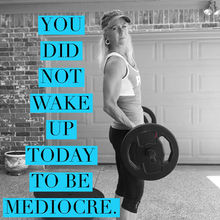3 Things to Think About Before You Sign Up for an Ironman
- Mary Timoney Ironman University Certified Coach
- Sep 10, 2024
- 3 min read
3 Things to Think About Before You Sign Up for an Ironman
There’s a lot to think about before you sign up for an iron distance race. You are taking on a huge commitment both physically and emotionally and you can expect that you will need to actively manage your time in the most productive ways. Sometimes folks come to me after having already registered for an iron distance race, and then realize that they are in way over their head with expenses, equipment, and most of all their time.
I want to save you from all that. In this blog post I am going to go through EXACTLY what you need to think about before you hit the REGISTER button on ironman.com website. Ready? Let’s go!
Equipment
1. You will need a road or triathlon bike. With aerobars. I say this because 56 or 112 miles in the cycling position is long, and you are going to need to rest on your elbows with a set of aerobars. You can find an inexpensive set on eBay, Amazon, or check the triathlon and cycling marketplace Facebook pages in your area.
2. You will need an indoor cycling option such as a trainer or Peloton, or spinner bike. You cannot do without this option because chances are at some point you will be faced with bad weather over the course of your training.
3. You will need a Garmin watch or other Smart Watch that connects with Training Peaks or Strava. I like the Forerunner series because these models are particular to the sport of triathlon (swim, bike, run, strength)
4. A Training Peaks Account, preferably the Premium option. This option gives the coach more features and data.
5. Road shoes for cycling. I highly recommend a triathlon shoe, especially if you are going for time. These typically have 2 velcro straps to get you in and out of your shoes quickly.
6. A good helmet. Invest in a good brand such as Bontrager, Rudy Project, etc. Be sure your helmet it is safety approved!
7. Pool toys. Pull buoy is most important in my book because you use that the most as an athlete. Fins and kickboard are a good investment too. I am not a huge fan of hand paddles as they can cause serious rotator cuff injuries if overused.
8. Access to weight training at a gym or a few sets of dumb bells, bands, kettlebells, etc.
What is your level of fitness?
Where are you at physically? I highly recommend having completed a few Sprint and Olympic distance races as well as a half marathon before a 70.3. For full iron distance, a previous 70.3 is recommended as well as a few short course races. In general, you should be able to run for one hour without stopping, bike 90 minutes, and swim 1500 yards before registering for an iron distance race in my opinion.
How is this going to fit into your life?
Have you thought about when you will train? Does this mean early morning and later in the day after work?
How will you manage kids’ activities, sports, full time job, etc.? You will need to be very intentional with how you spend your time.
Are you willing to use your weekends and holidays to train?
Is your spouse on board with your decision to do an ironman?
How can you involve young kids in your training time?
I recommend getting a physical calendar in front of you and mapping out your work week and all family activities for a few months at a time.
I hope you take into consideration the above suggestions and recommendations before you register for an iron distance race. If you really want to do an ironman, you will find a way to make it work and I applaud you for taking this on. You are about to take on something EPIC that will change your life for the better. Enjoy the journey!
Have you thought about hiring a coach for your next iron distance event? Click the purple button below and fill out the short form for a FREE coach call with Mary to talk about your race goals!
Mary Timoney
Ironman University Certified Coach
USA Triathlon Coach
ACSM Trainer



























Comments